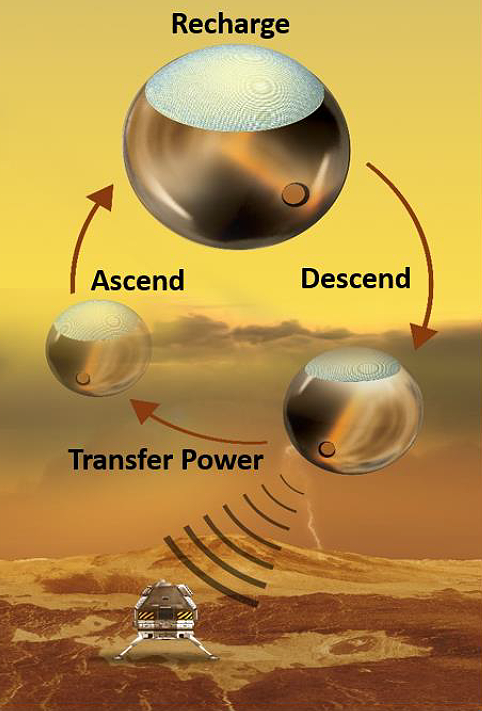Gliding in the clouds of Venus: NASA studies two Venus missions
Every year, NASA uses the “NASA Innovative Advanced Concepts” program (NIAC) to finance interesting projects that might someday become a reality. Projects in Phase 1 are subject to a nine-month study on their general feasibility, while in Phase 2, projects receive a two-year grant to develop their designs in detail. At the end, they aren’t required to be commercially marketable just yet – the transition to that level of development is done in Phase 3.
Currently, the list includes two projects whose destination is Venus, Earth’s hellish little sister.
Breeze (Bioinspired Ray for Extreme Environments and Zonal Exploration) is the name for a flying apparatus that is made of inflatable structures that can also flap like wings. It is designed to circle the planet high in the atmosphere, once every four to six days. It recharges while it is on the planet’s daytime side for two to three days, so that it can then coast across the night-time side. Breeze could be used to measure the surface of Venus, but also to analyze the clouds and detect currents and streams in the atmosphere. Because it can change its buoyancy profile itself, it can operate at different altitudes. As an inflatable flier, it will also fit in smaller entry vehicles. The concept could also be used on other celestial bodies, for example, Titan or even Earth.
The second Venus project doesn’t have an acronym that rolls off the tongue quite so easily: Power Beaming for Long Life Venus Surface Missions (PBLLVSM?) is intended to solve a problem for expeditions to Venus’s surface. The conditions there are so adverse (450 degrees Celsius, 95 bar atmospheric pressure, very little light) that conventional power generation by means of solar cells is barely possible. The researchers, therefore, want to beam energy to the lander using a wireless transfer method. An atmospheric platform (for example, a balloon or even Breeze) would produce energy from sunlight above the clouds, then it would descend below the clouds and transfer the energy to the lander, and finally it would climb up above the clouds again to harvest more energy. This project is also currently in Phase 1.

